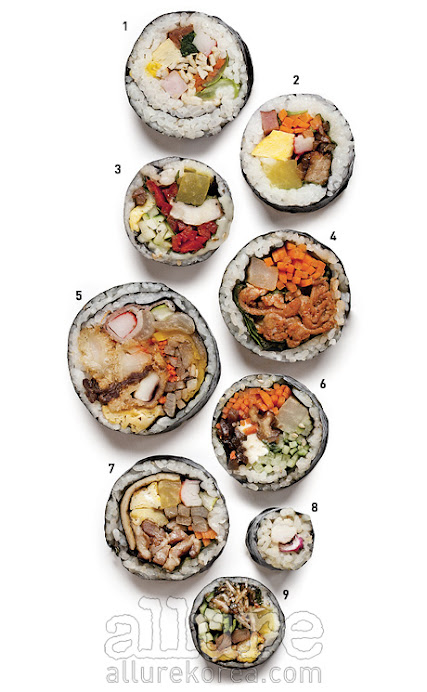According to the Comprehensive Agricultural Book of the late Joseon Dynasty, wheat was precious in Goryeo and could not be eaten except during sacramental occasions, and 'Gosashi Twelve' states, "Noodles were originally made from wheat flour, but in Korea, noodles are made from buckwheat flour," which suggests that they are Chinese noodles. Contrary to this, it can be seen that the ingredient of Korean noodles is not limited to flour. Food made by kneading flour such as wheat, buckwheat, potato, etc. and rolling it into thin slices or thinning it with a noodle mold, or boiling it and eating it by rolling it in soup or mixing it. It is cotton · Myeonja.
After the 1900s, rotary pressure noodle molds were developed, and dried wheat noodles made from dried wheat noodles began to be distributed, and after 1945, as imported wheat flour increased, various wheat noodle dishes became common.
Types of Korean noodles (한국 면의 종류)
Source_TOP Digital News in Australia
It is a dried noodle made from starches such as potatoes, sweet potatoes, and mung beans. When heated, it becomes smooth and transparent and has a springy texture. It is mainly used in japchae, and is also used in various hotpot and stew dishes.
The name Kalguksu comes from the fact that the dough is made with flour, rolled out, and then cut with a knife to pull out the noodles. The method of making it is quite simple, so even ordinary households can easily make it themselves. In the South, seafood is usually added and thickly sliced noodles are added, while in Gyeonggi Province, thinly sliced noodles are boiled in beef bone broth or chicken broth. In the Gyeongbuk region, soybean powder is mixed with wheat flour to make dough.
Somen is a representative noodle dish. It is a type of dried noodle with a thickness of about 1 mm. Depending on the method of making, there are ‘machine-made somen’ and ‘hand-made somen’. Somen has two meanings. The first means ‘noodles without seasoning’ and the second means ‘noodles with only simple vegetables and no meat seasoning.’
This is Busan's representative noodle. It is a raw noodle made by kneading flour with salt powder and then aging it for a day. It is said that Busan Milmyeon became widespread immediately after the Korean War, replacing Naengmyeon. Busan's milmyeon is a delicacy among the three foods, and because it heats up easily, the noodles are pulled out and cooked on the spot.
It is a noodle made by mixing buckwheat flour and starch. Beef broth, chicken broth, dongchimi soup, cabbage kimchi soup, etc. are cooled or slightly frozen depending on the occasion, and then eaten refreshingly with cold noodles, topped with cucumber slices, pear cabbage, pyeonuk, and dongchimi radish. In general, Hamheung naengmyeon is light gray in color with a lot of starch and a tough texture, while Pyongyang naengmyeon is characterized by a dark brown color due to its high buckwheat content.
Because the noodles are chewy, they are called jjolmyeon. It is thicker, more elastic, and yellow than cold noodles. There is a theory that it was born in the early 1970s when a cold noodle factory located in Incheon accidentally cut noodles that were thicker than regular cold noodles, and they took them from a nearby snack bar and mixed them with red pepper paste seasoning and started eating them.
It is a specialty of the northern region, especially the Pyeongan-do region, where buckwheat is grown heavily. Like Pyongyang Naengmyeon and Hamheung Naengmyeon, it originated in North Korea, and is divided into water noodles and mixed noodles depending on the broth and toppings.
It is made by mixing wheat flour or potato starch and kneading it by hand. It is very similar to gnocchi, a type of pasta. The method of making sujebi varies depending on the region. On the coast, it is served with seafood such as clams and seaweed, while in the inland, it is served with a stew made mainly of beef.
This is a type of noodles that adds a beautiful color to somen by adding green, brown, and red ingredients such as mugwort, acorn, and prickly pear. It adds to the atmosphere of a special day and is loved as a gift at parties or ceremonies.




댓글
댓글 쓰기